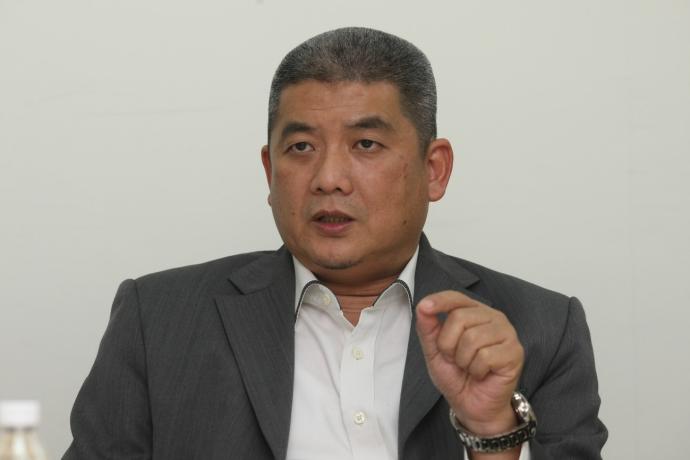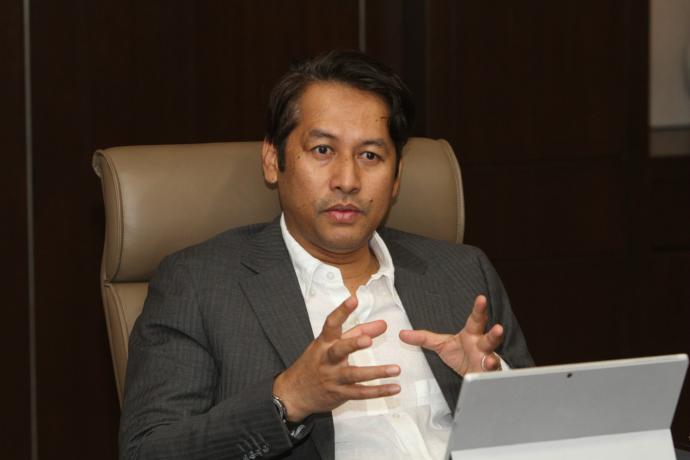y
When we think of space exploration in this day and age, Elon Musk and SpaceX immediately come to mind, their being synonymous with the industry. Over the past few years, we have heard conversations on not just finding life on Mars, but the possibility of having a multi-billion dollar space tourism industry.
Malaysia too is keen to get into this game. Datuk Dr Ir Mohd Abdul Karim Abdullah, group managing director and CEO of Serba Dinamik Holdings Bhd, shares that the company is forging the way in space tech in Malaysia.
Space tech may seem irrelevant to the common man, but in reality, it is powering a lot of earthly technologies today. Mohd Karim shares that Serba Dinamik is looking at connecting the dots within the information and communications technology (ICT) aspects of its core capabilities, such as its communication components. By providing ICT through internet connectivity using satellite technology, it is able to look into the underserved and unserved areas domestically. “Internet 4.0 is a revolution that provides internet access in the rural, most unserved areas. It is a pity that half the population of the world is unconnected.”
ICT is required to support the group’s various initiatives in frontier technologies that require broadband and internet connectivity. By providing the facilities and infrastructure, Mohd Karim says ICT opens up much bigger markets for other related industries under Industrial Revolution 4.0 (IR4.0).
“ICT also contributes in terms of nation-building — it is the intention of the government of the day to provide connectivity to the underserved and unserved communities. Malaysia Space Agency’s (MYSA) role is to give the advisory and technical support to assist Serba Dinamik to realise its objective in making a footprint in the space economy,” he says.
“Swissto12, a private expert based in Switzerland, has the technology to manufacture components that are used in satellites via 3D printing technology. We have partnered with them and through this collaboration, Serba Dinamik will enhance its capability in high-value engineering needed to support the space economy.”
According to Mohd Karim, Serba Dinamik believes that the space industry is another area on which the company can leverage its core competencies in operations and maintenance (O&M), engineering procurement construction and commissioning (EPCC), ICT as well as education and training.
Touching on artificial intelligence, Mohd Karim says space is an indispensable factor to catalyse its growth. Another example is the advances in earth-imaging data, which will increasingly provide vital insights to help in the calculation of macroeconomic activity, accurately measuring migrant flows and the impact of climate change, to name a few.
Space tech will also impact fintech, says Mohd Karim, as it will enhance secure global transactions across continents via decentralised platforms, such as blockchain. “We believe that space economy will strengthen the growth of our ICT segment and provide another source of income to the group.”
Withot a doubt, this comes with some challenges. Among others, Mohd Karim says the challenges will be on the readiness of our local financial institutions to come in and support space technology projects. Once the ecosystem of supply chain in this industry is created, our financial institutions need to support its financial requirement.
Another challenge, he adds, is for the government to swiftly develop the regulatory framework for the space industry to support this important agenda and the future of this country.
“Today, we see the world moving rapidly into digitisation with new innovations and technologies driving the economies. Serba Dinamik has been leading and leveraging this transformation to capitalise on the new businesses and new markets to stay relevant and sustainable.”
The group’s latest initiative in space technology is called New Space Economy Nexus (NSEN). Its objective, says Mohd Karim, is to capitalise on and build Serba Dinamik’s capabilities in terms of skilled or professional manpower, knowledge and technology transfer on equipment, opening new businesses along the value chain and building the ecosystem in Malaysia.
“Space economy comprises a full range of activities and uses resources that create value and benefits to human beings in the course of exploring, researching, understanding, managing and utilising space. It has distinguished features such as cutting-edge technologies and longer terms for both project development and return on investments,” says Mohd Karim.
“In the past, it was a government-dominated sector, as access to space is costly, involves technical risks and viability of space-enabled services requires large resources. That was true for the old space economy, characterised by big government programmes, a few big contractors, little competition, no growth and being usually defence-oriented.
“In contrast, the new space economy will have a mix of government and commercial programmes, a diversity of contractors and vigorous competition for exponential growth.”
Research and development initiatives by private entities boost the economic capacity and viability of the space economy.
Malaysia has yet to participate in this new space economy, says Mohd Karim, even though we have the capacity and capabilities to do so. MYSA has taken initiatives, via the Ministry of Science, Technology and Innovation (MOSTI) to introduce the Malaysian Space Board Bill 2020, which was tabled for its first reading last year. The bill is to regulate matters pertaining to the space industry.
“Serba Dinamik fully supports the initiatives that will promote more public-private partnership among industry players,” he says.
The space industry is not only about sending astronauts to space, or merely launching satellites for various missions. According to Morgan Stanley’s interpretation of New Space Economy, there are 10 main pillars that will propel the industry to reach US$1 trillion by 2040:
- Satellite launch: One of the largest sub-sectors, mainly focused on small launchers for commercial purposes.
- Manufacturing: Another large subsegment in the space economy, with companies focused on design and development of spacecraft, hardware, propulsion systems, engines and other technologies.
- Satellite internet: Focus on connectivity through low-earth orbit (LEO) satellites and mega constellations.
- Deep space exploration: Entities developing high-level missions for humans and cargo beyond the earth’s atmosphere such as to the moon, Mars and beyond.
- Lunar landing: Focused mission with the objective of accumulating experience living and working far from earth, by building products and infrastructure for moon missions.
- Earth observation: Companies focus on imaging, tracking and analytics technology to monitor weather, climate, maritime and GPS data.
- Asteroid mining: These disruptors are developing technology to extract water, rare minerals and metals from near-earth asteroids.
- Space debris: Track and analyse human-made objects orbiting in the atmosphere. Debris needs to be monitored or could collide with satellites and spacecraft, or fall to earth.
- Space tourism: Developing access to space for private citizens, space explorers, space adventure programmes and others.
- Space research: Dedicated to research, exploration and education about space and technology.










